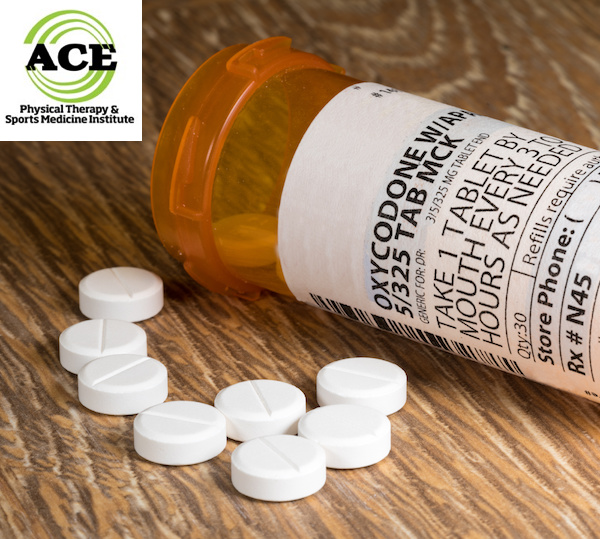ADDRESSING THE OPIOID CRISIS THROUGH MULTI-FACTOR TREATMENTS

Tid Bits of Info
- Hydrocodone/acetaminophen (Vicodin) is one of the most common prescriptions filled in the U.S.
- U.S. citizens that are in pain take 6-8 x more pain medication than other industrial countries.
- Drug overdose is the leading cause of accidental death in the U.S. and opioids are the most abused type of drug.
- Addiction is a primary, chronic and relapsing brain disease.
- Physical Therapists can prescribe specific exercises that are appropriate for the condition and will help to reduce the intensity of pain.
Severe pain and chronic pain can be disabling, preventing some people from holding down a job, sleeping, or simply completing day to day tasks. All too often the first and primary solution to overwhelming pain is to control it through opioids. Unfortunately, opioid use has been known to lead to addiction, overdose, or other adverse conditions. It is hard to read a medical publication without finding at least one article on the opioid crisis that has developed over the past two decades. Physical Therapists can help patients to reduce or avoid opioid use while controlling symptoms more permanently by using a multi -factor approach to treat their condition.
The American Physical Therapy Association is one of many healthcare organization that has begun to promote treating painful conditions with a multi-factor approach and avoid the use of opioids. The use of Physical Therapy has been very successful at reducing the amount of opioids that a person has to use to decrease their pain level to an acceptable level for that person.
Injuries, trauma or surgery to the human body can cause pain responses in the nervous system due primarily to the inflammation that occurs with these events. Physical Therapy treatment for pain can include numerous techniques such as exercise, manual therapy and modalities. Many claims have been made by healthcare professionals that their “special treatment” can reduce or resolve pain. Unfortunately, many of these claims are not supported by any research or evidence based results of particular studies.
The reduced use of opioids has to become a focal point of all medical publications and reporting. The social media and media outlets have to be more aggressive at promoting non-opioid approaches to pain control.

The use of opioids and rest for low back pain has been a standard treatment protocol for years. Fortunately, fewer doctors are prescribing bed rest and pain medication for this common condition. Basic physiology supports the use of exercise and manual therapy to reduce pain. The inflammatory process occurs and causes pain. In most instances, the ability of the muscle(s) to function properly in the injured area is reduced due to the inflammation and pain. When the muscles are functioning well, the ability to move is reduced and there is a decrease in blood flow in that area. When the person in pain performs “exercises” that promote movement of the injured area an increase in blood flow occurs which eventually helps with the healing process.
Physical Therapy and activity have been shown to reduce the need for opioid use. The early intervention with exercises, manual therapy and certain modalities can help to break the pain cycle and promote more natural movements and healing. Physical Therapists can prescribe a series of exercises and activities that are appropriate to treat the painful symptoms. The intensity of the program is individualized for the specific patient/client.
The opioid crisis has to be addressed and resolved by healthcare professionals. Doctors must convince their patients that non-opioid treatments are more effective at reducing their pain than the standard pain medicine that has been over-prescribed for the past 20+ years. Doctors must direct their patients to pursue alternative treatments such as Physical Therapy that include an exercise routine and other treatment techniques that are specific to the patient.

























Another great blog post on a very relevant topic. As physical therapists we definitely need to continue to advocate for ourselves and speak up for ourselves so that we become the primary choice for treating conditions such as low back pain. The literature shows that in most cases physical therapy is much more effective than opioids in treating patients with conditions like back pain. Opioids and bed rest are very passive treatments, whereas physical therapy is an active process that allows the patient to play a role in their own treatment and allow them to take back control of their lives.